Grandma was right — eating your vegetables is one of the best things you can do for your health. Science tells us over and over again that consumption of vegetables, especially those leafy greens, is associated with a lower risk of chronic disease (especially cardiovascular disease) and better mental health.
It turns out that there’s a direct link between how many green vegetables you eat and your chances of steering clear of cancer, heart disease, type 2 diabetes, dementia, osteoporosis, and nearly every other major illness of our times. It seems as if every day another study shows the extraordinary power of nutrient dynamos such as broccoli, bok choy, Brussels sprouts, Swiss chard, cabbage, collards, mustard greens, kale, beet greens, spinach, and dark greens of every kind.
The problem is, many of us don’t like vegetables. The average American gets only about 7% of calories from fruits and veggies, with most of the rest coming from meat, dairy, and processed food.
So How Can We Learn to Love the Foods that Actually Love us Back?
Before I tackle that question, let’s get clear on how many fruits and vegetables we’re aiming for. The most comprehensive study on the subject came out in 2017 in the International Journal of Epidemiology. The researchers scoured the scientific literature going back 70 years, evaluated over 50,000 studies, and found 142 that directly looked at the link between consumption of various foods, and rates of heart disease, stroke, cardiovascular disease, cancer, and mortality. Those 142 studies examined the eating habits and health outcomes of 2.1 million people and followed them for years and sometimes for decades.
10 Servings a Day?
The punch line of this massive study? Aim for 10 servings of fruits and vegetables per day. Any fewer gives you less protection from disease and premature death. People who reached the magic number of 10 had a 31% lower chance of dying, throughout the studies, than those who ate little or none. The researchers estimated that up to seven million lives could be saved worldwide every year if all of us had access to and chose to consume enough fruits and veggies. And we’d not only live longer but would have a greatly increased quality of life, too.
So what do 10 servings a day look like?
In that study, the researchers defined 10 servings as 800 grams or 1.75 pounds of produce per day. Dr. Michael Greger reviews serving sizes in his video about his daily dozen checklist. In it he explains the following serving sizes:
- Leafy Greens & Other Vegetables — 1 cup for raw leafy greens, 1/2 cup raw or cooked vegetables
- Berries & Other Fruits — 1/2 cup for berries, 1 medium-sized fruit, 1 cup of cut-up fruit, or 1/4 cup of dried fruit
You can get your 10 a day by eating a big salad, a couple of cups of steamed greens, a large baked potato, a veggie pizza slice with tomato, onion, and green pepper, an apple, a banana, and a cup of grapes. For people who love the taste of fruits and veggies, 10 a day is pretty attainable. But many people have developed a dislike for vegetables, in particular.
The Origins of Veggie-Phobia

If you grew up on the modern industrialized diet, full of processed food, artificial flavorings, and added salt, sugar, and fat, then fresh vegetables (and even fruit) will taste bland, at best. If you’ve ever tasted an orange after eating a candy bar, you’ll understand that our taste buds adapt quickly to new peaks of flavor, and then find lower amounts very unstimulating.
We perceive five basic tastes in food: sweet, salty, bitter, sour, and umami. Of these, the least popular to many of us is bitter, which may indicate the presence of toxins in a potential food source. Many vegetables are a bit on the bitter side, and if you didn’t grow up getting exposed to bitter foods regularly, it can be difficult to cultivate the taste as an adult.
Sweet is a Much More Popular Taste
The core reason why we like “sweet” is because it’s associated with mother’s milk and high-calorie foods like ripe fruit. A preference for sweet food guides us to consuming enough calories, which has had an evolutionary advantage in a world of frequent shortages, famines, and food instability.
Unfortunately, the industrial food system has hijacked our taste buds to make anything that isn’t screaming with sweet, fatty, and salty flavors seem tasteless by comparison. Flavorists, as flavor scientists are known as, work for every processed food conglomerate to raise what they call the “bliss point” of each product: that magic formula that makes the food as addictive as possible to maximize sales and profits.
When those foods become your norm, there’s no way a plate of steamed zucchini can compete.
Flavor Learning & Exposure
Fortunately, our taste buds’ preferences are not fixed and can change based on exposure. That’s why people from every culture enjoy the foods they grow up eating, even if those foods may seem odd or even disgusting to outsiders. We tend to like the foods that our parents and other adults liked when we were little, a phenomenon called social learning. We like new foods that have similar flavor profiles to ones we already like, a process known as taste-flavor learning. And via flavor-nutrient learning, we can also come to like foods containing nutrients that do “good things” to our bodies.
The Main Engine of Changing our Taste Buds is Exposure
Our taste buds are actually kinds of skin (epithelial) cells. And like other epithelial cells, they slough off and regenerate every eight to twelve days. That’s right, your belief in a fixed set of taste preferences is, biologically speaking, an illusion. If you start eating broccoli and you find it mildly unpleasant, stick with it. Have a small floret every day, and your body will start to associate the taste of broccoli with the massive health benefits it provides. It works when feeding toddlers and children new foods, and it can work when we use the strategy on ourselves.
And it’s not just a psychological phenomenon; researchers found that subjects’ saliva changed in response to frequent consumption of bitter foods to make them more palatable. In one study, people drank bitter chocolate cow or almond milk every day for six weeks and rated the level of bitterness after each glass. Scientists collected and analyzed their saliva each week. The protein makeup of their saliva changed as they gained more and more exposure to the bitter chocolate, which they rated as less and less bitter over time.
15 Tips on How to Eat More Vegetables

So if you are trying to figure out how to eat more vegetables, and you don’t really care for them, your best strategy is just to keep eating them. That may sound like a double bind — in order to love vegetables, you have to eat vegetables you don’t love — but in practice, it’s quite doable. And change can happen pretty rapidly. I hear all the time from people who’ve improved their diets, and they can’t believe how their taste preferences have changed. To speed the process and make it easier and more enjoyable, here are some tips to help you figure out how to eat more vegetables.
1. Cut Them Up Playfully (Especially for Kids)
Studies have found that kids (and some adults!) respond differently to foods depending on how they’re sliced and prepared. And when vegetables are cut into appealing shapes, like stars or cartoon characters, that can help, too. Some parents even give vegetables fun names, like calling broccoli florets “trees.”
As healthy-parenting expert Emily Honeycutt reminds us, “Kids learn through play. We develop habits by creating habit loops — building associations with positive or negative emotions. The more positive emotions we associate with vegetables throughout our childhood, the more likely we are to continue those healthy habits throughout our lives.”
2. Cook Creatively
Cook vegetables in a variety of ways. Grill asparagus with lemon, bake squash and serve it as boats filled with quinoa or a stir-fry, or roast cauliflower “steaks.” Want something simpler? My mom, Deo, makes some of the best greens I’ve ever tasted. She cuts kale into thin strips and sautés the strips with garlic and onion in olive oil, and then steam-cooks it with a little organic tamari. Delicious!
3. Give It a Whirl
Make a soup by puréeing steamed veggies in a blender with your favorite herbs and spices (many people especially love ginger and garlic). If you want a thicker or creamier texture, you can add white beans, potatoes, cashews, or a coconut or nut milk.
4. Add Them to Everything
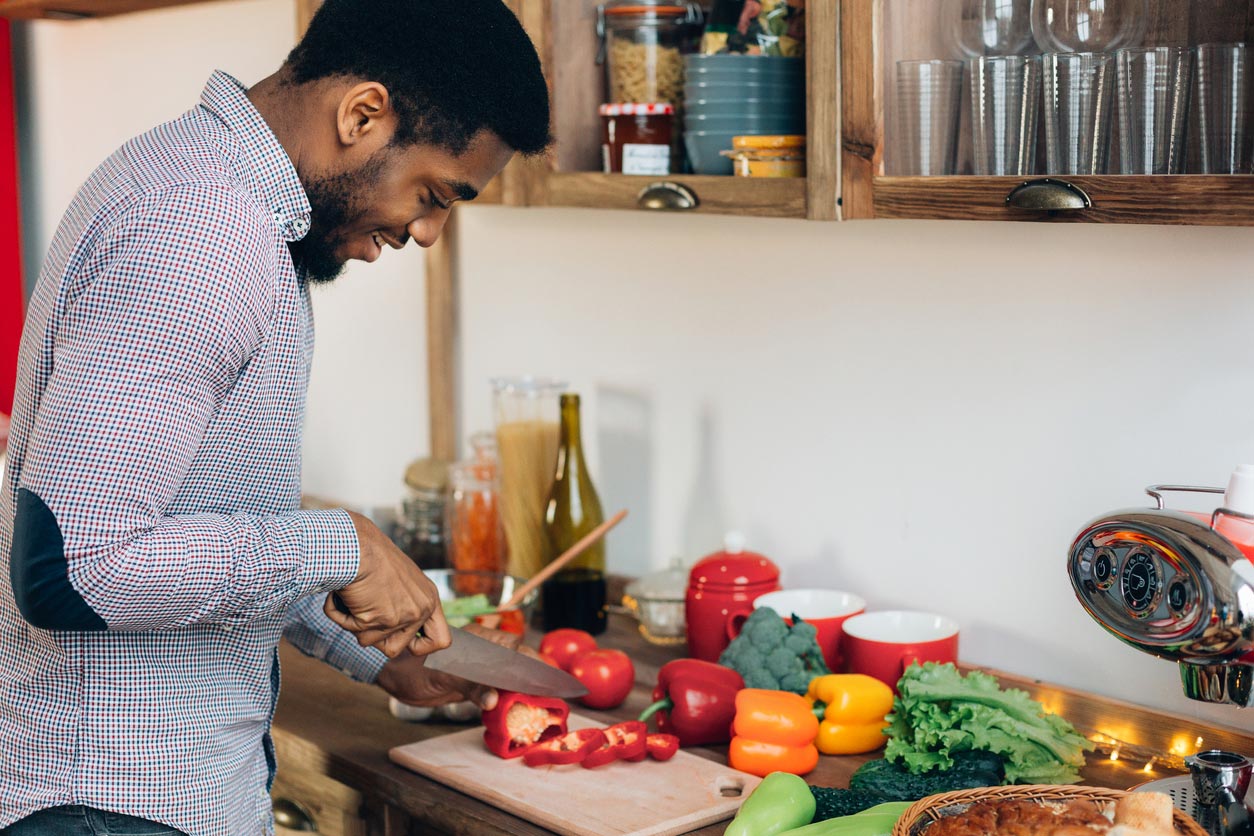
One of the best ways to figure out how to eat more vegetables is just by adding them to everything, especially dishes you already know and love. You can add veggies to pasta sauce, pizza, lasagna, casseroles, and chili, or to cooked quinoa, brown rice, or barley. Chop up fresh vegetables like spinach, cucumbers, mushrooms, peas, or kale and toss them into whatever you’re cooking. You can even blend your veggies, so they effectively become part of the base.
5. Feature Them
Pour tomato sauce over cooked chopped vegetables like onions, zucchini, mushrooms, and leafy greens. Or if you want to get fancier, try a spiral slicer or a mandoline — or even a simple vegetable peeler — to make fun noodle shapes out of zucchini, spaghetti squash, or eggplant. Don’t limit vegetables to a side dish or a side salad. See what happens if you make them into the main event. Some chefs even use zucchini or avocado as a base for desserts.
6. Grow Them
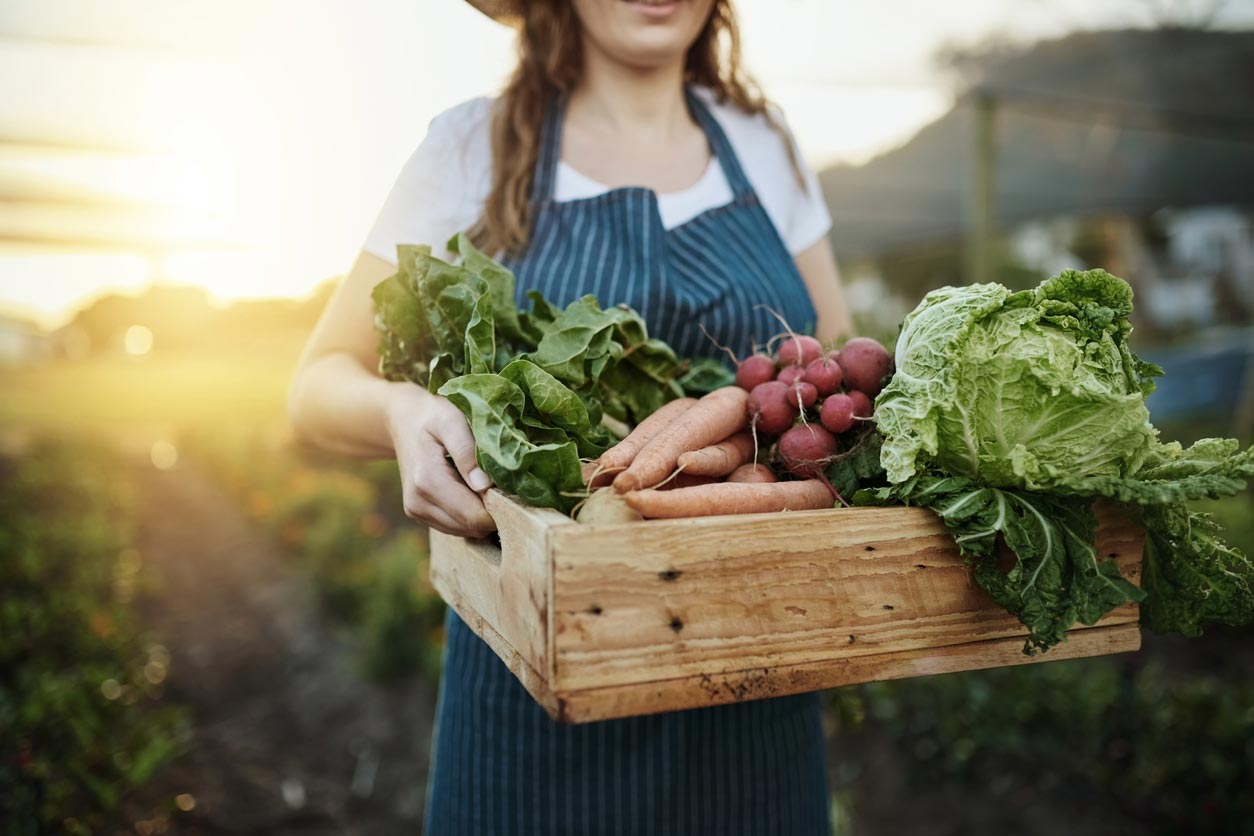
Studies find that when children (or adults!) grow vegetables, they’re more likely to eat them. Plant a few seeds in the yard or in a container inside your window. Water as needed, and watch the miracle of life unfold. Gardening is a great way to enjoy the freshest, healthiest possible food, and it builds a strong relationship with produce that sets up your family to enjoy it more.
7. Dehydrate Kale into Chips
Instead of reaching for potato or corn chips, you can make your own kale chips with a dehydrator, or use your oven on a low setting, like 200 or 250°F. Destem the kale, marinate it in lemon juice and seasonings, and then dehydrate or bake it. The flavor and crunchy texture can be intoxicating!
8. Make a Slaw
With a food processor, or by hand, shred the tough “winter veggies” like cabbage and carrots into an easy-to-enjoy slaw. Fold in some raisins, and top it with your favorite dressings. Plus, it’s easy to plop slaw into a container and grab it when you’re on the go.
9. Marinate
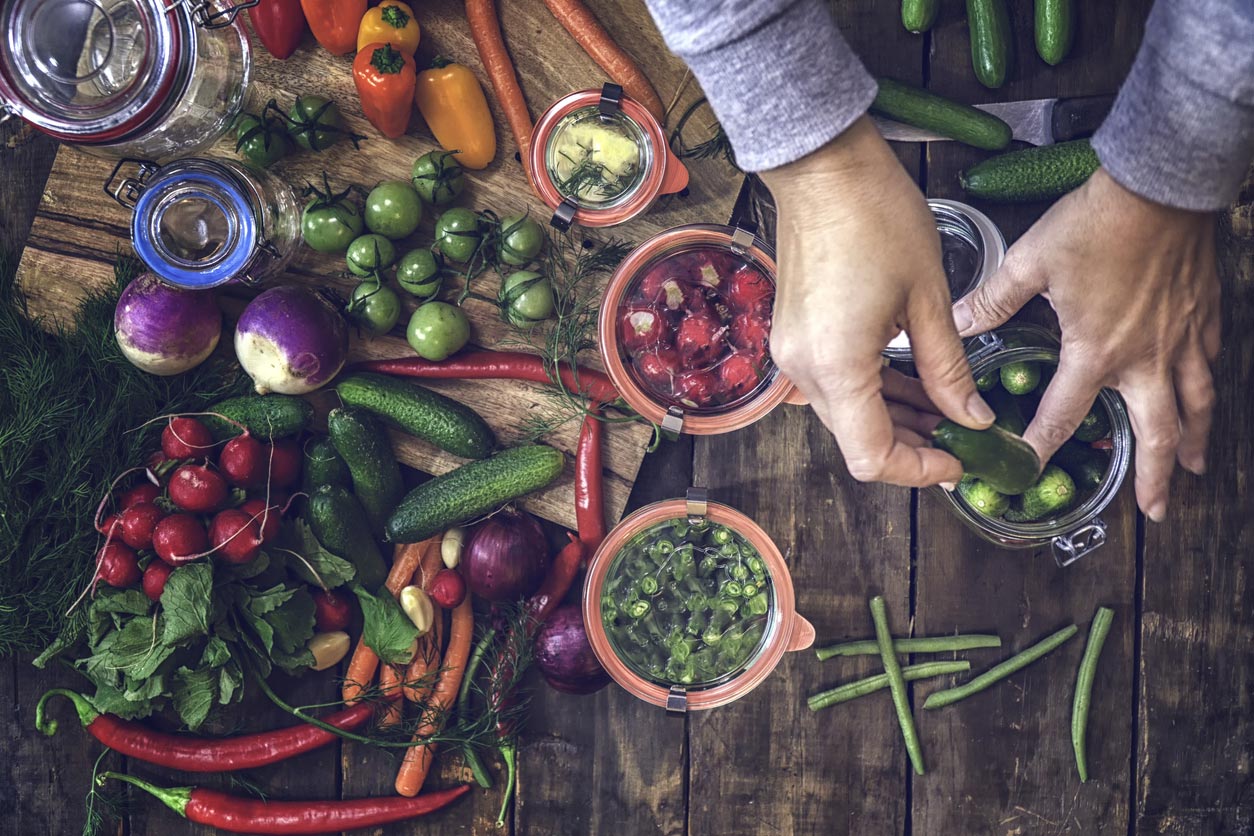
Marinate your favorite vegetables, chopped, for a few hours to soften and flavor them before cooking. For the marinade, I like a mix of garlic, ginger, soy sauce, and (optionally) olive oil. You can marinate mushrooms, broccoli, string beans, asparagus, collards, and lots more. You can also enjoy some marinated vegetables raw. Or if you like, you can roast, grill, bake, or sauté them — or add them to a stir-fry.
10. Wrap It Up
It’s not hard to figure out how to eat more vegetables if you just hide them in a wrap. Simply wrap veggies up in a lettuce leaf (or a steamed leaf of collard greens or cabbage). Or grab a tortilla and add your favorite sauces, salsa, or spices.
11. Slice and Dip
You’re a lot more likely to reach for the veggies instead of the chips if they’re already in snackable form. When you get home from a shopping trip, wash and cut some snacking vegetables and store them in the fridge for easy access. You can also make your own veggie dips for when the snacking urge strikes!
12. Steam Away
Probably the best way to eat abundant vegetables is to steam a pot of them. Our family does this frequently. We like broccoli, kale, collards, cabbage, onions, carrots, zucchini, and Swiss chard. Our kids love eating with their fingers, so we leave big chunks, including whole leaves and carrots. We often keep sauces for dressing or dipping on hand.
13. Experiment with Seasonings

If vegetables, or any other food, still seem a little plain to you, there’s one simple way to add flavor and even more nutrition. Spice it up! If you’re not an old hand in the kitchen, avoid overwhelm by starting with spice blends associated with cuisines you enjoy. With a few shakes, you can transform a simple veggie bowl into an Asian, Tex-Mex, North African, Ethiopian, Indian, or Mediterranean delight.
14. Try Something New with a Friend (Make it a Contest or Challenge)
Need a little push to get started, or a touch of accountability to keep you going? Why not add a bit of fun to your veggie-quest by challenging a friend to do it with you? You could each pick a vegetable and commit to eating a pound of it (or more!) this week. You can communicate privately, or broadcast your challenge on social media and invite others to play and comment — #veggiechallenge, anyone?
15. Start with the Veggies You Do Like
I don’t want this long list to give you the idea that adding veggies to your diet will be some incredibly complicated and difficult feat. You probably already like some vegetables, even if you think of yourself as a veggiephobe. If you can tolerate corn, or carrots, or sweet peas, don’t discount them. Pile them on right now — no need to wait!
6 Veggie-tastic Recipes to Enjoy Right Now:
With a little ingenuity, creativity, and effort, you can create lots of veggie-ful recipes at home. Try some of these recipes to get more vegetables into your diet.
Rice Paper Rolls With Sriracha & Soy Sauce Tofu And Peanut Sauce by I Love Vegan
The tofu, baked in sriracha and soy sauce, is the chewy and satisfying key to this yummy, veggie-filled recipe. And the rice paper wrapper, which turns a pile of veggies and tofu into dippable finger food, is the ultimate “delivery mechanism” for raw peppers, carrots, organic cucumbers, organic spinach, and green onions. (To avoid GMOs, make sure the tofu is organic).
The Yummiest Vegetable Soup by Hummusapien
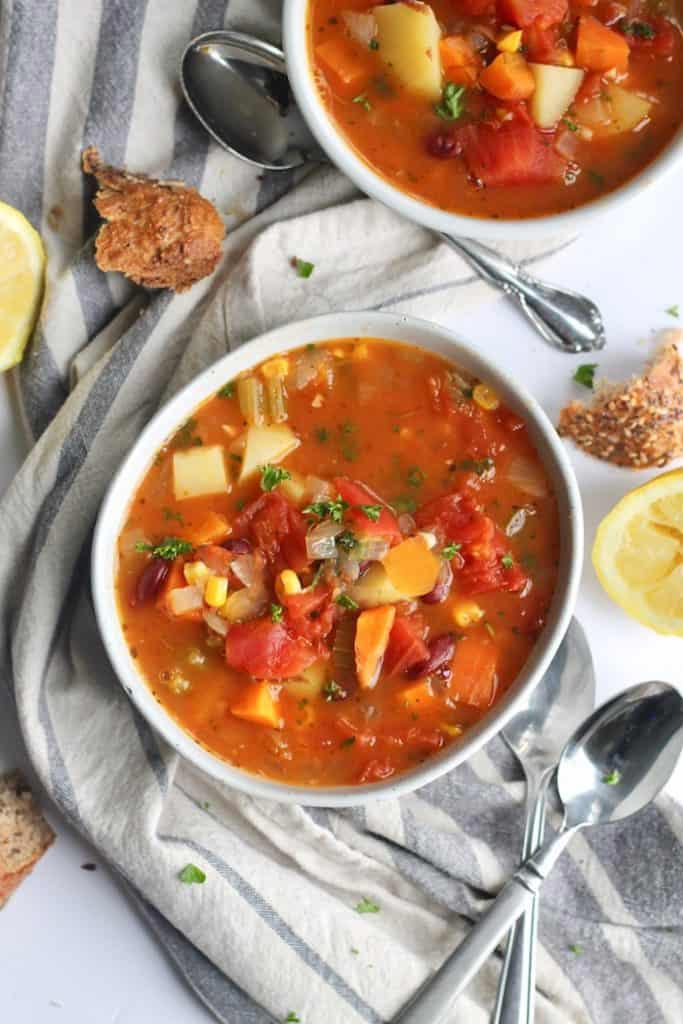
This Italian-inspired vegetable soup hits the spot on a cold winter night. It’s easy to make and can be cooked on the stovetop, in an electric pressure cooker to save time, and in a slow cooker, so you can start it in the morning and come home to the most wonderful aroma after a long day. You’ll fill your stomach (and soul) with tomatoes, celery, potatoes, corn (try to make sure these first four are organic), carrots, onion, and garlic, which you can enjoy along with a chunk of hearty, organic, whole-grain bread.
Build-Your-Own Buddha Bowl by Cookie + Kate
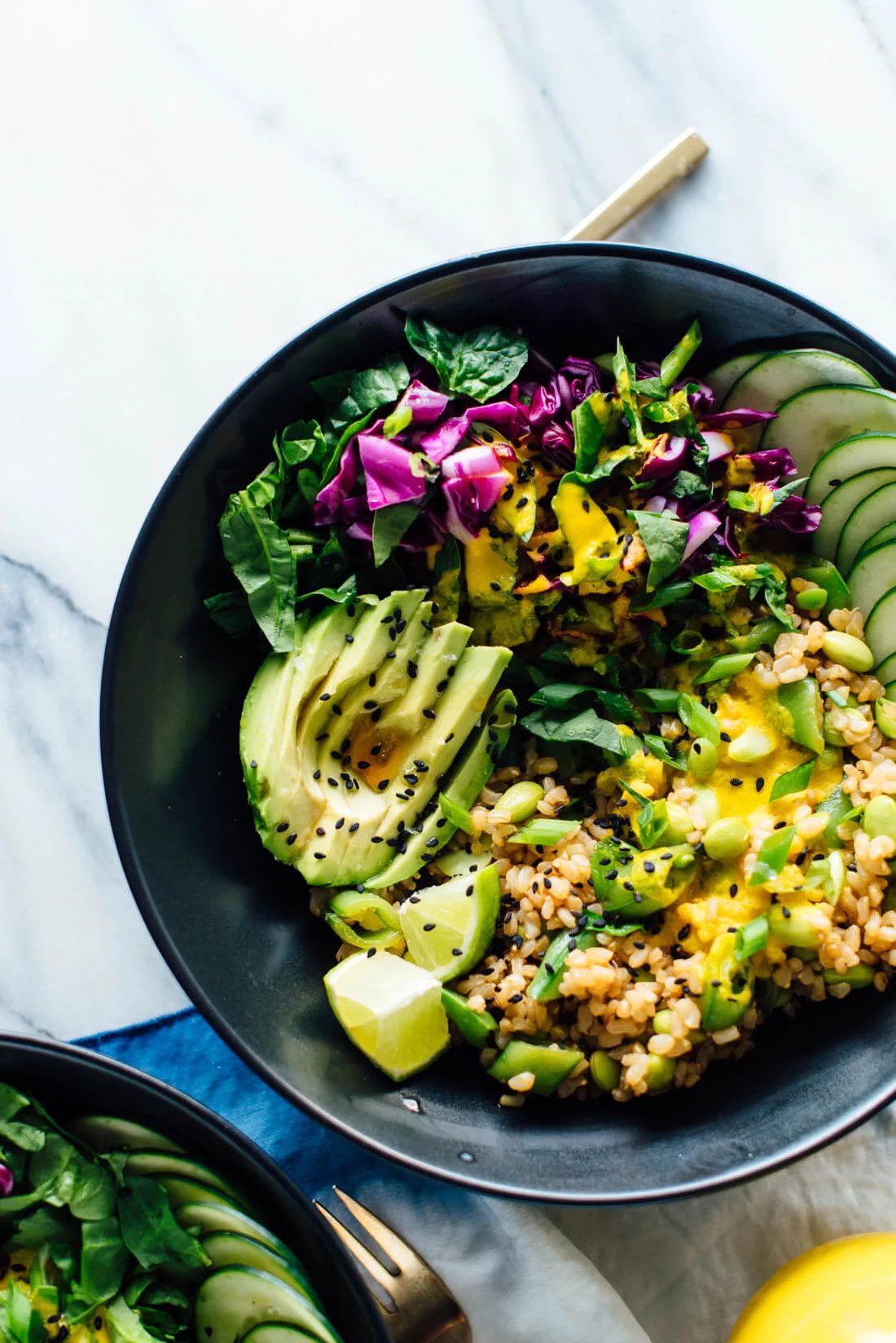
If you like Instagramming your food, you’ll love these colorful, celebratory, and utterly delicious Buddha Bowls. This recipe, meant as a starting point on your Buddha Bowl journey of exploration, provides organic edamame (fresh young soybeans), broccoli, or snow peas (and why not both?), spinach, kale (both organic), or some other leafy green, red cabbage (again, the more, the merrier), sliced avocado, and cucumber for garnish over brown rice. (If you want to avoid the possibility of arsenic in the brown rice, you can substitute quinoa or millet.)
Cajun Zucchini Noodle Pasta by Detoxinista
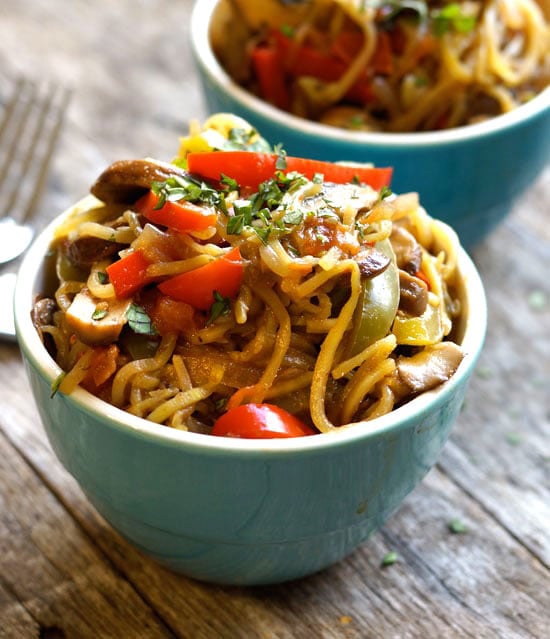
Here’s a veggie-rific dish you can share with your Paleo friends since the noodles are actually zoodles (yes, that’s what the cool kids are calling zucchini noodles these days). The flavor explodes with the addition of onion, green and red bell peppers, mushrooms, organic tomatoes, and a nice amount of Cajun seasoning.
Roasted Vegetable Tacos With Chimichurri by Minimalist Baker
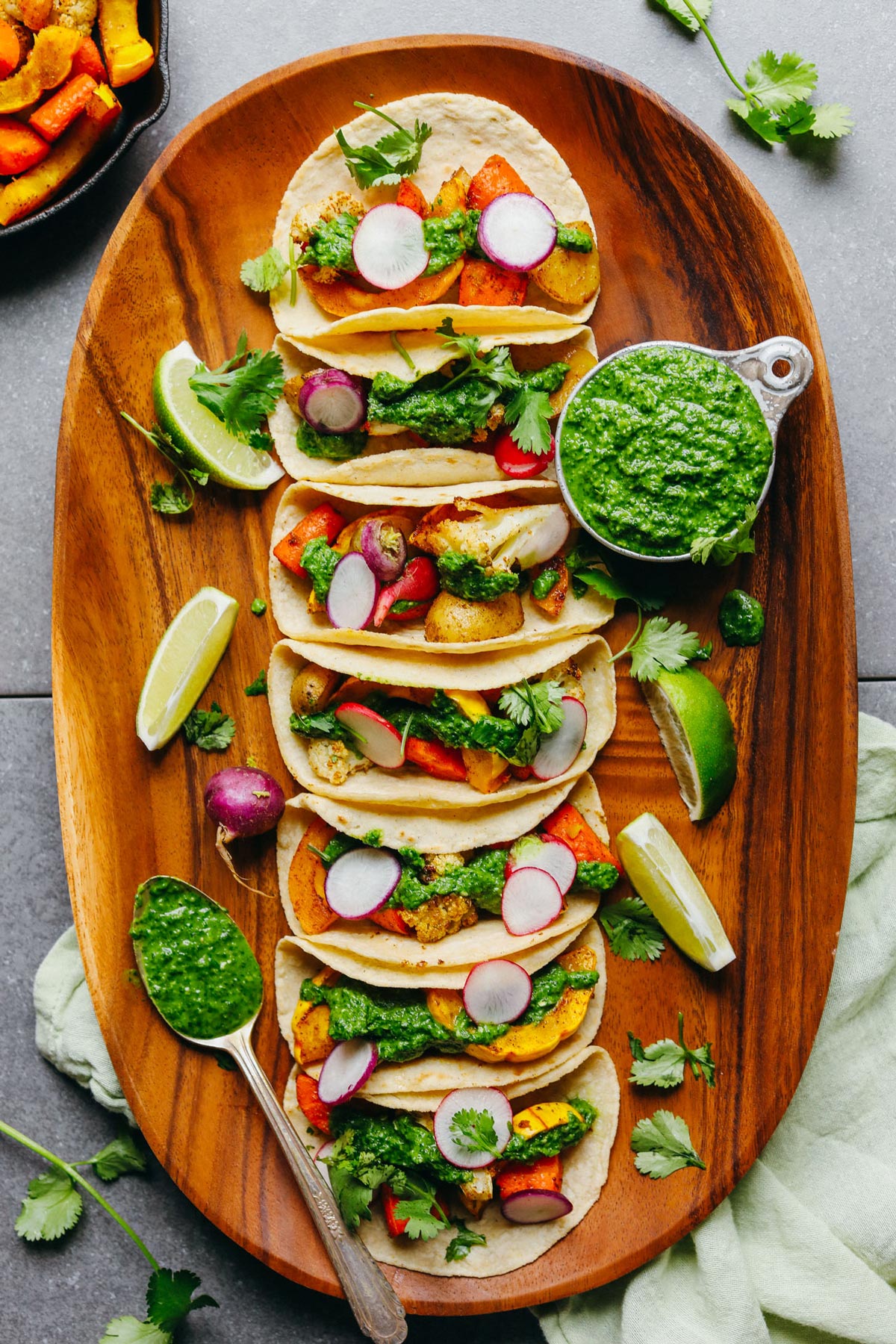
Somehow, putting ordinary veggies in a blanket — whether a burrito, spring roll, or taco — turns them into a party. These roasted veggie tacos include cauliflower, carrots, organic potatoes, squash, and avocado. They also sneak in more veggie goodness inside the vibrant green chimichurri sauce, including cilantro, garlic, organic serrano peppers, and a whole cup of parsley. Throw all this onto fresh, warm, organic tortillas, add your favorite garnishes, and let the party get started!
Roasted Beet Salad With Oil-Free Lemon Dressing And Vegan Feta by SunnysideHanne
If you grew up eating beets that took on the shape of the can they were served from, you’re forgiven for thinking that maybe they aren’t the height of culinary delight and sophistication. This recipe may convert you to the beet-loving person you were always destined to be. The trick here is to roast the beets, which you then toss with organic cherry tomatoes, organic spinach, and red onion. Add the delicious vinaigrette and almond-based vegan feta cheese, and you have a salad or simple peasant meal, depending on your mood.
It’s Worth It to Eat More Vegetables

A lot of people think it would be nice if donuts and french fries were good for you, while it was Swiss chard that was carcinogenic. But that’s not how it is. And no matter how much you might think you love donuts and french fries, they’ll never love you back. But bok choy will.
The more your body gets used to a variety of vegetables, the more you’ll enjoy them. A little effort to cultivate new habits, and to nurture new tastebud patterns, can pay off with better health for the rest of your life.
Tell us in the comments:
- What are your favorite vegetables?
- How do you like to prepare them?
- Do you have any tips for inspiring friends or family on how to eat more vegetables?
Featured image: iStock.com/Vasyl Dolmatov

